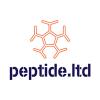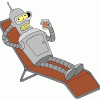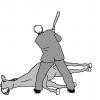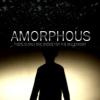I know! That is a pretty crazy discovery if it's true. I'm still working my way through the some of the published research but if it turns out to be true it could definitely contribute to the effects of LLLT. I would be very surprised if it turned out to be the primary mechanism but I've been wrong before. =)Falco, that ez water video is CRAZY.
Could this be an explanation for the primary effect of LLLT?

Lostfalco's Extensive Nootropic Experiments [Curated]
#1201
Posted 11 October 2013 - 12:12 PM
#1202
Posted 11 October 2013 - 12:48 PM
Zawy...I appreciate your contributions but I'm gonna have to ask that you link us to studies from now on to back up your positions. I'm totally open to your positions being correct but I would like to know precisely where you get your information. Thanks again man...I'm super excited about many of your ideas and all the cool stuff that you are building! =)Concerning the Vetrolaser, 175 mW times 3 is 0.525 W. That's the same as 30 LEDs. 96 LED device on ebay is much better, covering a much larger area. The laser would be good for arhtritis in the fingers, and small localized injuries, maybe even good for a knee or shoulder injury, but I prefer 25 W for the shoulder and knee. A large area like the brain needs 200 W for 10 minutes and is the most the head can take without too much heat, if a fan is used. All the old papers used 830 nm lasers and all the researchers agree that 830 nm is much better. Maybe 808 nm has FDA approval for something so that they can sell them.
The Schiffer pilot study in 10 depressed patients indicated that 810nm light, "may have utility for the treatment of depression and other psychiatric disorders and that double blind randomized placebo-controlled trials are indicated."
Of course, this is a VERY small feasibility study so take it for what it's worth. =)
http://www.ncbi.nlm....les/PMC2796659/
Results
At 2-weeks post treatment 6 of 10 patients had a remission (a score ≤ 10) on the HAM-D and 7 of 10 achieved this on the HAM-A. Patients experienced highly significant reductions in both HAM-D and HAM-A scores following treatment, with the greatest reductions occurring at 2 weeks. Mean rCBF across hemispheres increased from 0.011 units in the off condition to 0.043 units in the on condition, for a difference of 0.032 (95% CI: -0.016, 0.080) units, though this result did not reach statistical significance. Immediately after treatment the PANAS improved to a significantly greater extent with NIR "on" relative to NIR "off" when a hemisphere with more positive HEV was treated than when one with more negative HEV was treated. We observed no side effects.
Conclusion
This small feasibility study suggests that NIR-PBM may have utility for the treatment of depression and other psychiatric disorders and that double blind randomized placebo-controlled trials are indicated.
Edited by lostfalco, 11 October 2013 - 12:49 PM.
#1203
Posted 11 October 2013 - 12:54 PM
27 total transcranial animal studies, 5 of these with humans. Human study links:
1. http://dspace.mit.ed...le/1721.1/58558 (scroll to bottom to download full text pdf of PILOT study)
2. http://www.ncbi.nlm....les/PMC2796659/ (non-controlled)
3. http://stroke.ahajou.../38/6/1843.long
4. http://stroke.ahajou.../40/4/1359.long
5. http://www.ncbi.nlm....pubmed/23200785
Reviews
6. https://dl.dropboxus...nzalez-lima.pdf (full text summary of current transcranial lllt research, explains moa)
7. http://www.collegeof...e-and-brain.pdf (Thanks Nattzor!)
8. http://www.ncbi.nlm....les/PMC3065857/
9. http://www.ncbi.nlm....les/PMC3288797/
10. http://www.ncbi.nlm....les/PMC2933784/
11. http://www.ncbi.nlm....pubmed/22807422
Books
http://www.prima-boo...apyHandbook.php
http://www.prima-boo...en-Lectures.php
Edited by lostfalco, 11 October 2013 - 01:20 PM.
#1204
Posted 11 October 2013 - 04:23 PM
Speaking of all these cognitive improvements, and whatnot, have any of you actually recorded your results either through Dual-N-Back or Cambridge Brain Sciences. If not, please do. It would add to the credibility of the whole endeavour. The processing speed you people are experiencing sounds absolutely amazing.
I'm currently doing it, no one else is currently doing it afaik (or have done it, sadly). Maybe 1-2 more are planning on doing it though.
#1205
Posted 11 October 2013 - 04:28 PM
Speaking of all these cognitive improvements, and whatnot, have any of you actually recorded your results either through Dual-N-Back or Cambridge Brain Sciences. If not, please do. It would add to the credibility of the whole endeavour. The processing speed you people are experiencing sounds absolutely amazing.
I took the Cambridge Brain Challenge a couple of times beforehand, and just started with the LEDs last night. I'll take it again after doing it for 1 month, and then after 3 months.
#1206
Posted 11 October 2013 - 04:32 PM
The most interesting change occurred last night. I used the LEDs for the first time, then went to bed. During my 7:23 hours of sleep, I recording an astonishing 8 sleep cycles! I've never had this many cycles in the 3-4 months I've been recording. The highest I'd gotten before was 6. (And my sleep length is usually 7:00-7:30 hours).
I'll keep recording and monitoring any changes.
#1207
Posted 11 October 2013 - 06:45 PM
Edited by Megatrone, 11 October 2013 - 06:46 PM.
#1208
Posted 11 October 2013 - 09:34 PM
Can you be a little more specific? For example, if you want evidence that 830 nm was historically used for healing, not 808 nm, go to pubmed and do a search on "830 nm laser" and then "808 nm laser". The first shows 400 results and the second 340. Click on the "last" button for the studies. The last page is before 1995 for both. It looked like most if not all of the 830 nm was used for healing and most of the 808 nm were for burning sutures (I did not see one for healing). Maybe sutures were bigger business so the lasers are more abundant. Or maybe it is the way people are doing searches for studies, not trying 830 nm. In 2010 (page 8 of my pubmed search for 808 and page 7 for 830 nm) I counted 12 to 14 titles for 830 that were clearly healing and 4 for 808 nm. Several of the studies you have cited state the ideal wavelength is around 830 or at least centers on that. Your studies also state approximately how much the brain needs. Maybe you are doubtful the 96 LED is better than the Vetrolaser. Maybe in horses getting past hair is really important, so the laser could help a lot there, especially with shallow localized injuries like a knee. But the 10 Watts needed to power 96 LED verses the 2 Watts that are probably needed for the more powerful Vetrolaser, and the similar efficiencies in energy to light conversion of LEDs and laser, mean treatment time will be less with the 96 LED by about a factor of 5 when applied to a bald head. How much heat the head can take is based on my experience as my video shows. I believe this gives adequate evidence for my assertions in the previous post. Since you are the thread starter and instigator of my newfound interest in applications to the brain, I am content to stop posting unreferenced and unclarified assertions.
Zawy...I appreciate your contributions but I'm gonna have to ask that you link us to studies from now on to back up your positions. I'm totally open to your positions being correct but I would like to know precisely where you get your information. Thanks again man...I'm super excited about many of your ideas and all the cool stuff that you are building! =)Concerning the Vetrolaser, 175 mW times 3 is 0.525 W. That's the same as 30 LEDs. 96 LED device on ebay is much better, covering a much larger area. The laser would be good for arhtritis in the fingers, and small localized injuries, maybe even good for a knee or shoulder injury, but I prefer 25 W for the shoulder and knee. A large area like the brain needs 200 W for 10 minutes and is the most the head can take without too much heat, if a fan is used. All the old papers used 830 nm lasers and all the researchers agree that 830 nm is much better. Maybe 808 nm has FDA approval for something so that they can sell them.
Edited by zawy, 11 October 2013 - 09:36 PM.
#1209
Posted 12 October 2013 - 05:36 AM
I know it's accumulative and can take weeks to see results, I think I just got my hopes up when that one guy zapped his brain a single time and came back acting like he could view the fabric of time and speak directly with God all because he used a horse laser on his brain.
From my research and others it looks like the 96 LED is just as effective as the vetro laser and possibly better...I just find that hard to believe and I want to give this a good chance to work. What do you guys think? Can the 96 LED penetrate deeply enough? There's no way to ask that without sounding gay
Edited by basicallyyes, 12 October 2013 - 05:50 AM.
#1210
Posted 12 October 2013 - 07:13 AM
Hi everyone! I've been doing the 96 LED on alternating days for a total of three session for 1 minute in each region and I ain't felt shit!!!!!!!!!!!!!!!!!!!!!!!!!!!!!!!
I know it's accumulative and can take weeks to see results, I think I just got my hopes up when that one guy zapped his brain a single time and came back acting like he could view the fabric of time and speak directly with God all because he used a horse laser on his brain.
From my research and others it looks like the 96 LED is just as effective as the vetro laser and possibly better...I just find that hard to believe and I want to give this a good chance to work. What do you guys think? Can the 96 LED penetrate deeply enough? There's no way to ask that without sounding gay
May I ask how long each session has lasted? Also, what parts are your targetting - are you doing your whole brain, the forehead, specific regions such as F3 or F4, etc.? Are you doing only LLLT or the TULIP stack?
I would be patient, maybe continue with one minute per region for awhile, until you've completed perhaps two weeks total since the first treatment, and then increase to two minutes or so. I've had pretty sound results from TULIP thus far and I haven't even done as much as most have. Sporadic treatments for random amounts of time at random points on my head but typically between my eyebrows (since reading the Euon comment on this thread) and at F3 and F4. In a bit, before I go to bed, I'm going to do my "whole brain" with the 96 LEDs for one minute per region.
Another thing is, I think we will all get drastically different effects at completely different times. There is some cool literature on LLLT at various acupoints ranging from uses in depression, smoking cessation, and pain, to affecting 'healthy' individuals. In the literature on laser acupuncture, it was noted that targeting the same acupoint that benefited those with Depression caused different brain regions to be activated in healthy individuals. It didn't have just different effects on the two differing groups - it literally activated entirely different brain regions. So, we can't expect much from others experiences other than that it has some effect.
Hope you continue with LLLT and start receiving noticeable benefits from it. After awhile you may want to look into other applications as well, such as LLLT at acupuncture/pressure points or for exercise performance and recovery.
#1211
Posted 12 October 2013 - 12:11 PM
It says it consumes 18 W whereas an 96 LED advertisement says 15 W, so it might be a little more powerful, but its area is twice as large so it might take nearly twice the time to get the same treatment per area because the intensity is diluted when you are close to it. But I do not know the size of its LEDs and the overall Watt specifications do not tell exactly what light the LEDs are outputting. They both advertise 80 meter light illumination for security cameras. The four 850 nm arrays I bought from ebay in the past were all about 30 mW/cm^2. I would use the 96 LED 20 to 30 minutes per area twice a day. This is based on the effect my 75 mW/cm^2 has, and the estimated 2% light penetration and assumed goal of 1 J/cm^2. This statement comes from:Do you think this 140 LED would be OK: http://www.ebay.com/...=item461417200a ?
(30 mW/cm^2) x (0.001 W/mW) x (20 minutes) x (60 secs/min) x (0.02 penetration ratio)= 0.76 J/cm^2.
The Sun has the same intensity in the beneficial wavelength range at noon in most places that are not deep winter, but not all on the ideal wavelengths, so 20 minutes under these might be like 40 minutes under the mid-day Sun. I can't provide a reference for this assertion about them being equivalent, but I could demonstrate the Sun's intensity (and a 100 W halogen light) do provide this intensity in the beneficial range, and a lot more if the beneficial range is claimed to be out to 1064 nm. I have not seen an article that demonstrates full range is less beneficial than specific wavelengths
I find more than 15 minutes with my helmet seems to affect my head more than I feel safe with.
(75 mW/cm^2) x (0.001 W/mW) x (15 minutes) x (60 secs/min) x (0.02 penetration ratio)= 1.35 J/cm^2 over the entire head.
#1212
Posted 12 October 2013 - 03:24 PM
After a lot of back and forth I've finally decided to give TULIP a go. I can't really wait to get started, so I'm looking to purchase the 96 LED from within the EU. However, the cheapest I can find is this. I know I can get it a lot cheaper from the US, but I really don't want to wait three weeks to a month before getting it, contra one week from the EU.
Holy shit, that's pricey!
I've finally ordered the 48 as well as 96 LEDs from this guy of amazon.de, which I mentioned before;
http://www.amazon.de...ds=96 led 850nm
http://www.amazon.de...infrarot 48 led
Conscidering they come with a power adapter, it's actually quite cheap. At least the cheapest source I've found, including european-wide searches on both ebay as well as amazon.
I should mention two things though:
1) I haven't tried the LED's yet, because
2) they still haven't arrived , even though I ordered from within Germany, on the 3rd of october (so 9 days ago).
Then again I guess it would still be faster than ordering from outside the EU, plus you won't get custom problems.
As soon as my LED's arrive, I will post an update, of course.
Joe's post from September 7th is quite detailed...is this what you were thinking of? http://www.longecity...720#entry610562
Check his google links for diagrams. =)
Thanks Lostfalco, can't wait to finally get started!
#1213
Posted 12 October 2013 - 03:36 PM
Hi everyone! I've been doing the 96 LED on alternating days for a total of three session for 1 minute in each region and I ain't felt shit!!!!!!!!!!!!!!!!!!!!!!!!!!!!!!!
I know it's accumulative and can take weeks to see results, I think I just got my hopes up when that one guy zapped his brain a single time and came back acting like he could view the fabric of time and speak directly with God all because he used a horse laser on his brain.
From my research and others it looks like the 96 LED is just as effective as the vetro laser and possibly better...I just find that hard to believe and I want to give this a good chance to work. What do you guys think? Can the 96 LED penetrate deeply enough? There's no way to ask that without sounding gay
May I ask how long each session has lasted? Also, what parts are your targetting - are you doing your whole brain, the forehead, specific regions such as F3 or F4, etc.? Are you doing only LLLT or the TULIP stack?
I would be patient, maybe continue with one minute per region for awhile, until you've completed perhaps two weeks total since the first treatment, and then increase to two minutes or so. I've had pretty sound results from TULIP thus far and I haven't even done as much as most have. Sporadic treatments for random amounts of time at random points on my head but typically between my eyebrows (since reading the Euon comment on this thread) and at F3 and F4. In a bit, before I go to bed, I'm going to do my "whole brain" with the 96 LEDs for one minute per region.
Another thing is, I think we will all get drastically different effects at completely different times. There is some cool literature on LLLT at various acupoints ranging from uses in depression, smoking cessation, and pain, to affecting 'healthy' individuals. In the literature on laser acupuncture, it was noted that targeting the same acupoint that benefited those with Depression caused different brain regions to be activated in healthy individuals. It didn't have just different effects on the two differing groups - it literally activated entirely different brain regions. So, we can't expect much from others experiences other than that it has some effect.
Hope you continue with LLLT and start receiving noticeable benefits from it. After awhile you may want to look into other applications as well, such as LLLT at acupuncture/pressure points or for exercise performance and recovery.
hey chakra, I do my entire brain and each area for a full minute so it comes out to around a total of 13 minutes altogether. I'm not sure what the F3 and the F4 points are but I'm probably hitting them since I do the entire brain (but for my knowledge, where are they?). I've been doing shilajit + coq10 and I have added PQQ which i take every day. I'll be sure to target between my eyebrows on my next session, I believe I didn't get that low due to speculation on whether it harms the eyes or not.
I'm going to continue for at least a month, I just can't help but think that I need to get a laser in order for it to work to its full potential.
#1214
Posted 12 October 2013 - 05:30 PM
#1215
Posted 12 October 2013 - 07:14 PM
#1216
Posted 12 October 2013 - 08:18 PM
I will also try TULIP stack and will report my results. I'm just waitig for my order
keep us updated
#1217
Posted 12 October 2013 - 11:55 PM
The more and more studies I read, its time- like 10-20mins a spot. I have just up'ed it to 8mins- as per heat, its slightly warm, much less than a hot day. (this was a great read up a couple posts- Low-level light therapy of the eye and brain)
All this micromanaging between 150 leds to 48 leds- its obvious that a giant LED can cover more area, but really its bulky and this regimen doesn't take that long with a 48LED light- they are basically all the same- go on Ebay, ali express and blow 40 bucks.
I also think n-back tests, luminosity is all crap, put a rat in same maze a couple times he gets faster, sure but is he smarter? Just google the total lack of evidence in these "brain programs" so even if scores go up- it does nothing for credibility.
Where I do think small amounts of time are good is in the 808nm Lasers where the spot is 2mm in dia- I think its too concentrated and a overall LED style "washing" of the gray does more to create bloodflow, cytochrome, and mitochondrial activity.
I would like to hear about how this can compete with nootropics.
#1218
Posted 13 October 2013 - 02:25 PM
While I'm at it, I think I'll just order this as well: http://tdcs-kit.com/, in case TULIP doesn't pan out.
Actually you can do both together. I am doing TULIP alternating with tDCS every other day. What's make the schedule difficult is that LED is done at nighttime and tDCS is in the morning. Sometime I have to skip one or two session due to my working schedule, or simply lack of time or tiredness. Each tDCS is about 20 min, it is difficult to stimulate more than one area of interest unless you have 2 or more machine.
#1219
Posted 13 October 2013 - 07:39 PM
Biochem Soc Trans. 2013 Oct 1;41(5):1331-4. doi: 10.1042/BST20130054.
Improvement of mitochondrial function and dynamics by the metabolic enhancer piracetam.
Stockburger C, Kurz C, Koch KA, Eckert SH, Leuner K, Müller WE.
Source
*Department of Pharmacology, University of Frankfurt am Main, Biocenter, D-60438 Frankfurt am Main, Germany.
Abstract
The metabolic enhancer piracetam is used in many countries to treat cognitive impairment in aging, brain injuries, as well as dementia such as AD (Alzheimer's disease). As a specific feature of piracetam, beneficial effects are usually associated with mitochondrial dysfunction. In previous studies we were able to show that piracetam enhanced ATP production, mitochondrial membrane potential as well as neurite outgrowth in cell and animal models for aging and AD. To investigate further the effects of piracetam on mitochondrial function, especially mitochondrial fission and fusion events, we decided to assess mitochondrial morphology. Human neuroblastoma cells were treated with the drug under normal conditions and under conditions imitating aging and the occurrence of ROS (reactive oxygen species) as well as in stably transfected cells with the human wild-type APP (amyloid precursor protein) gene. This AD model is characterized by expressing only 2-fold more human Aβ (amyloid β-peptide) compared with control cells and therefore representing very early stages of AD when Aβ levels gradually increase over decades. Interestingly, these cells exhibit an impaired mitochondrial function and morphology under baseline conditions. Piracetam is able to restore this impairment and shifts mitochondrial morphology back to elongated forms, whereas there is no effect in control cells. After addition of a complex I inhibitor, mitochondrial morphology is distinctly shifted to punctate forms in both cell lines. Under these conditions piracetam is able to ameliorate morphology in cells suffering from the mild Aβ load, as well as mitochondrial dynamics in control cells.
SIMILAR FULL-TEXT DISCUSSION (2010)
http://www.ncbi.nlm....les/PMC2944646/
"Findings that piracetam enhances fluidity of brain mitochondrial membranes led to the hypothesis that piracetam might improve mitochondrial function, e.g., might enhance ATP synthesis. This assumption has recently been supported by a number of observations showing enhanced mitochondrial membrane potential, enhanced ATP production, and reduced sensitivity for apoptosis in a variety of cell and animal models for aging and Alzheimer disease. As a specific consequence, substantial evidence for elevated neuronal plasticity as a specific effect of piracetam has emerged."
Edited by lostfalco, 13 October 2013 - 07:41 PM.
#1220
Posted 13 October 2013 - 10:59 PM
http://www.ncbi.nlm....les/PMC3478265/
"Supplementation of selenium significantly increased mitochondrial respiration and improved the activities of mitochondrial respiratory complexes. We conclude that selenium activates mitochondrial biogenesis signaling pathway and improves mitochondrial function."
"Selenite treatment not only increased activity of complex I, II+III and IV in cells by 50, 60, and 85%, respectively, but also increased the activities per milligram of protein, suggesting that besides mitochondrial biogenesis, selenium may also increase the efficiency of each complex."
Edited by lostfalco, 13 October 2013 - 11:07 PM.
#1221
Posted 13 October 2013 - 11:58 PM
More potential mitochondrial biogenesis upregulators
1. bezafibrate
2. resveratrol
3. AICAR
Target: PGC-1α http://en.wikipedia.org/wiki/PPARGC1A
"PGC-1α is a transcriptional coactivator that regulates the genes involved in energy metabolism. PGC-1α is a regulator of mitochondrial biogenesis and function.[3]"
Edited by lostfalco, 14 October 2013 - 12:00 AM.
#1222
Posted 14 October 2013 - 01:00 AM
Purchase 19-21 of these IR LED arrays. They seem to be the same as the LED array inside the one popular among people here. It has a two pin power connector in the back.
Buy an adjustable headstrap such as this
Attach 10 LED arrays to the strap that covers the circumference of the head. Attach 5 along the strap that goes over the top of the head. Attach the other 4-6 arrays over the open spaces not covered by the straps on the sides of the head. Attach these to the other LED's with bungee or shock cord so they float comfortably.
Since it isn't enclosed it will take a while before it gets too hot.
Two technical questions I haven't looked into:
1. how to attach the arrays to the straps, perhaps epoxy? something heat resistant.
2. most importantly.. how to power. It'd require 20 two-pin power wires running to some sort of source. I'm hoping someone here with some electrical know-how can chime in.
If it works, we'dhave a relatively effective 1000 bulb LED helmet for around $250 or less.
Any thoughts?
Edited by frigger, 14 October 2013 - 01:03 AM.
#1223
Posted 14 October 2013 - 01:17 AM
Think the main thing with this is time.
The more and more studies I read, its time- like 10-20mins a spot. I have just up'ed it to 8mins- as per heat, its slightly warm, much less than a hot day.
This is a major difference compared to my device. My 48 LED is only acceptable for the first 5-6 minutes. After that, it is so hot that over 2 minutes over any spot becomes painful. So now I have to wonder why results differ in that regard.
What are other people's experiences with the heat from their 48 LEDs?
I also think n-back tests, luminosity is all crap, put a rat in same maze a couple times he gets faster, sure but is he smarter? Just google the total lack of evidence in these "brain programs" so even if scores go up- it does nothing for credibility.
It's very true that those exercises by themselves do not seem to increase intelligence, but what alternative means of testing do you suggest? Just relying on how 'awesome' it feels does not really cut it. We need some sort of benchmark.
#1224
Posted 14 October 2013 - 01:21 AM
Very interesting new article on piracetam and mitochondria. Sorry about the extended quotes...I just thought it was really cool info. =)
Biochem Soc Trans. 2013 Oct 1;41(5):1331-4. doi: 10.1042/BST20130054.
Improvement of mitochondrial function and dynamics by the metabolic enhancer piracetam.
Stockburger C, Kurz C, Koch KA, Eckert SH, Leuner K, Müller WE.
Source
*Department of Pharmacology, University of Frankfurt am Main, Biocenter, D-60438 Frankfurt am Main, Germany.
Abstract
The metabolic enhancer piracetam is used in many countries to treat cognitive impairment in aging, brain injuries, as well as dementia such as AD (Alzheimer's disease). As a specific feature of piracetam, beneficial effects are usually associated with mitochondrial dysfunction. In previous studies we were able to show that piracetam enhanced ATP production, mitochondrial membrane potential as well as neurite outgrowth in cell and animal models for aging and AD. To investigate further the effects of piracetam on mitochondrial function, especially mitochondrial fission and fusion events, we decided to assess mitochondrial morphology. Human neuroblastoma cells were treated with the drug under normal conditions and under conditions imitating aging and the occurrence of ROS (reactive oxygen species) as well as in stably transfected cells with the human wild-type APP (amyloid precursor protein) gene. This AD model is characterized by expressing only 2-fold more human Aβ (amyloid β-peptide) compared with control cells and therefore representing very early stages of AD when Aβ levels gradually increase over decades. Interestingly, these cells exhibit an impaired mitochondrial function and morphology under baseline conditions. Piracetam is able to restore this impairment and shifts mitochondrial morphology back to elongated forms, whereas there is no effect in control cells. After addition of a complex I inhibitor, mitochondrial morphology is distinctly shifted to punctate forms in both cell lines. Under these conditions piracetam is able to ameliorate morphology in cells suffering from the mild Aβ load, as well as mitochondrial dynamics in control cells.
SIMILAR FULL-TEXT DISCUSSION (2010)
http://www.ncbi.nlm....les/PMC2944646/
"Findings that piracetam enhances fluidity of brain mitochondrial membranes led to the hypothesis that piracetam might improve mitochondrial function, e.g., might enhance ATP synthesis. This assumption has recently been supported by a number of observations showing enhanced mitochondrial membrane potential, enhanced ATP production, and reduced sensitivity for apoptosis in a variety of cell and animal models for aging and Alzheimer disease. As a specific consequence, substantial evidence for elevated neuronal plasticity as a specific effect of piracetam has emerged."
That's a really interesting study. But then we have to wonder, what goes wrong over the long term? Because the review study on piracetam supplementation versus ginkgo supplementation versus 'neither' showed that the group that had taken piracetam had actually declined in cognition over time, whereas the ginkgo group had better results over the long term compared to the piracetam and the neither group.
#1225
Posted 14 October 2013 - 01:40 AM
#1226
Posted 14 October 2013 - 03:33 AM
http://www.ncbi.nlm....les/PMC2949087/
#1227
Posted 14 October 2013 - 06:04 AM
Here's a thought for a relatively cheap whole-head device.
Purchase 19-21 of these IR LED arrays. They seem to be the same as the LED array inside the one popular among people here. It has a two pin power connector in the back.
Buy an adjustable headstrap such as this
Attach 10 LED arrays to the strap that covers the circumference of the head. Attach 5 along the strap that goes over the top of the head. Attach the other 4-6 arrays over the open spaces not covered by the straps on the sides of the head. Attach these to the other LED's with bungee or shock cord so they float comfortably.
Since it isn't enclosed it will take a while before it gets too hot.
Two technical questions I haven't looked into:
1. how to attach the arrays to the straps, perhaps epoxy? something heat resistant.
2. most importantly.. how to power. It'd require 20 two-pin power wires running to some sort of source. I'm hoping someone here with some electrical know-how can chime in.
If it works, we'dhave a relatively effective 1000 bulb LED helmet for around $250 or less.
Any thoughts?
you should be able to use something along the lines of this http://www.amazon.co.../dp/B00E7IFOYI/ to power it. Each board comes with a 12v 500ma power supply, so 12v 10a should be adequate for 20 boards. There was also a 12v 10a power brick on amazon, the form factor looked a little better. It was twice as expensive though.
For attaching, it looks like the boards have mounting holes. You should just be able to sew them onto the strap.
I'd be more worried about availability of the boards, it didn't look like they had a large number in stock.
#1228
Posted 14 October 2013 - 10:55 AM
Here's a thought for a relatively cheap whole-head device.
Purchase 19-21 of these IR LED arrays. They seem to be the same as the LED array inside the one popular among people here. It has a two pin power connector in the back.
Buy an adjustable headstrap such as this
Attach 10 LED arrays to the strap that covers the circumference of the head. Attach 5 along the strap that goes over the top of the head. Attach the other 4-6 arrays over the open spaces not covered by the straps on the sides of the head. Attach these to the other LED's with bungee or shock cord so they float comfortably.
Since it isn't enclosed it will take a while before it gets too hot.
Two technical questions I haven't looked into:
1. how to attach the arrays to the straps, perhaps epoxy? something heat resistant.
2. most importantly.. how to power. It'd require 20 two-pin power wires running to some sort of source. I'm hoping someone here with some electrical know-how can chime in.
If it works, we'dhave a relatively effective 1000 bulb LED helmet for around $250 or less.
Any thoughts?
I've been looking at that exact same thing (LED arrays), but the total cost was about $70 or so instead (without power).
http://www.aliexpres.../769933345.html - $0.047 ea - Free shipping
http://www.aliexpres...1261916124.html - $0.0418 ea + Free shipping
http://www.aliexpres.../505051318.html - $0,05 ea + $15.79 Shipping (to Sweden atleast), so there are a few options.
#1229
Posted 14 October 2013 - 04:09 PM
Edited by zawy, 14 October 2013 - 04:13 PM.
#1230
Posted 14 October 2013 - 07:02 PM
While I'm at it, I think I'll just order this as well: http://tdcs-kit.com/, in case TULIP doesn't pan out.
Actually you can do both together. I am doing TULIP alternating with tDCS every other day. What's make the schedule difficult is that LED is done at nighttime and tDCS is in the morning. Sometime I have to skip one or two session due to my working schedule, or simply lack of time or tiredness. Each tDCS is about 20 min, it is difficult to stimulate more than one area of interest unless you have 2 or more machine.
Have you seen any significant improvement from the combination or either?
Also tagged with one or more of these keywords: nootropic
Science & Health →
Brain Health →
Nootropic Stacks →
how would you describe Cerebrolysin to a person unfamiliar to nootropics?Started by davidwood557 , 01 Oct 2024 |
|

|
||
Round Table Discussion →
Business →
Retailer/Product Discussion →
J 147 Powder to Treat Alzheimer’s DiseaseStarted by Peptide.ltd , 18 Apr 2024 |
|

|
||
Science & Health →
Brain Health →
Montelukast?Started by mp_double , 25 Jan 2024 |
|

|
||
Science & Health →
Brain Health →
Nootropic Stacks →
What are the most effective NOOTROPICS based on science?Started by Forever21 , 30 Oct 2021 |
|

|
||
Science & Health →
Brain Health →
Dihexa?Started by brendan1 , 05 Sep 2021 |
|

|
150 user(s) are reading this topic
0 members, 150 guests, 0 anonymous users




















































